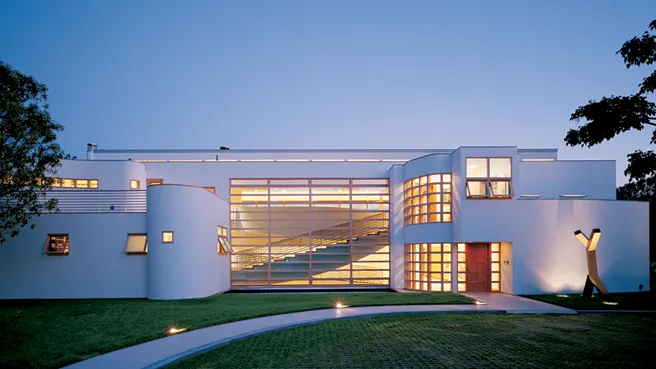Last fall I was in England exploring some ultra modern holiday homes as part of a press trip for a project called Living Malibu architects. While happily snapping photographs of these contemporary buildings, one woman said to me: “Make sure there are people in the photos; architecture is about people.” That was Jane Wernick, one of the project’s structural engineers, who later told me she had edited an entire book about how architecture affects our psyche.
Building Happiness: Architecture to Make You Smile, is a collection of essays by architects, artists, policy advisors, engineers and other big thinkers that discusses whether the way we design our buildings and environments can directly affect how happy we feel?
The book’s contributors are part of Building Futures, the Royal Institute of British Architects’ think tank set up to explore how and where people will be living and in what types of buildings and environments over the next 20 to 50 years.
So, can we construct happiness?
While some in book take issue with the assertion that there is a direct link between architecture and a good mood, most agree that good architectural design allows for positive relationships and social interaction between people and buildings, and the spaces they inhabit.
The need for physical comforts – light, sound and temperature – as well as the need for culture and community were also noted as important elements in how architecture can promote happiness.
The dislike for places that make us feel alienated and out of control, was a recurring theme among the essays, and as Wernick notes, “The best places are those which let us feel we are in control, and that allow for good social interaction and the opportunity to be one with nature.”
In addition, Wernick asked people with a penchant for buildings and architecture to describe the places that make them happy. Journalist Kirsty Wark’s happy place was a Glasgow museum; sculptor Antony Gormley chose his own studio as his happy place; and architect Richard Rogers feels happy in the courtyard space at London’s River Café restaurant. (Rogers says three things in life bring him happiness – food, sex and architecture.)
And Wernick’s happy place? It’s one in which she had a hand in the design, the Xstrata Treetop walkway at the Royal Botanic Gardens at Kew, which offers a long stroll through deciduous trees at 18 metres above the ground.
Building Happiness draws no hard and fast conclusions about whether architecture directly affects one’s happiness, but it can make you smile and it is “mood for thought” for those who design, plan and build our favourite spaces.
My philosophy of writing, and all art, echoes Gaboury’s belief about architecture: “The essence of architecture is space structured for human beings, but the ultimate goal is symbolic, metaphoric or spiritual, like any other art form. The difference with architecture is that it links art with the practical.”


